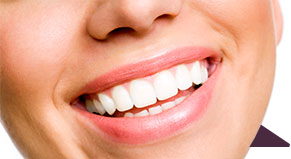 Regularly brushing and flossing your teeth are essential for good dental health. Your teeth stay white, your breath smells great, and most importantly it helps prevent any major dental issues down the road.
Regularly brushing and flossing your teeth are essential for good dental health. Your teeth stay white, your breath smells great, and most importantly it helps prevent any major dental issues down the road.
When it comes to brushing your teeth, you have two options: regular or electric toothbrush. If you visit the website of any electric toothbrush manufacturer, they claim that the electric toothbrush is superior in many departments. Take what you read with a grain of salt because they’re obviously trying to sell their own product.
We’re going to look at the pros and cons of both electric and traditional toothbrushes and come to a conclusion as to which one is superior.
Regular Toothbrush
For thousands of years prior to the invention of the modern toothbrush in the 1930’s, people “brushed” their teeth using a rough cloth and water. Sometimes they’d rub salt and/or chalk across their teeth in order to get rid of the grime. Instead of toothpaste, they’d use the ashes of burned eggshells and ox hooves – which probably didn’t leave a very minty-fresh aftertaste in their mouths.
Since the 1930’s hundreds of millions of people have used the regular toothbrush to clean their teeth. Over time the standard toothbrush has gone from pig and horse hair to synthetic fibers that are designed to gently clean your teeth without damaging them.
Different Types & Sizes
Not all toothbrushes are created equal. There are two general kinds of manual toothbrushes that are designed to perform a specific function:
Conventional – A conventional toothbrush is either rectangular or heptagon (7 sided) in shape. It’s the most basic form of a toothbrush and is used by a large number of people.
Diamond shape – The tip of the head of this brush is much narrower than a conventional one. This allows for quick and easy access to the back teeth.
The average toothbrush comes in assorted sizes as well. There are sizes specifically designed for infants zero to two years old, children two to twelve years old, and a one-size-fits-all for anyone 12 years and older.
The bristle pattern can also differ. Toothbrushes come in:
- Block - bristles arranged like a square block
- Wavy or V-shape – bristles arranged in a v-shape patter
- Multilevel trim – bristles are arranged in a trimmed multilevel pattern
- Criss-cross – bristles are arranged in a criss-cross pattern
- Polishing-cup – there is a polishing cup made of bristles in the center.
The manufacturers of all of these types of toothbrushes claim they are superior for plaque removal, allowing easier access to difficult-to-clean areas and even the ability to clean surface stains (such as coffee or tobacco) effectively.
Pros of a Manual Toothbrush
With all the various shapes, sizes, and designs of a toothbrush, what are the pros of using a manual toothbrush?
- With a proper brushing technique, you can thoroughly clean your teeth. A good brushing takes around 2 minutes with a good toothbrush.
- You have multiple styles, colors, bristles, and heads to choose from.
- Easy to travel with. Doesn’t take up much room in your suitcase or day bag.
- No bulky charging device or having to replace batteries.
- Inexpensive
Cons of a Manual Toothbrush
- It’s going to require more work to perform the same effective cleaning as an electric toothbrush would. All fine and dandy, but think about the last time you were completely tired when you brushed your teeth. Do you think you did a thorough job in your sleepy state of mind?
- Timing Guesswork. Unless you set a timer, which most people don’t, you’re going to have to guess when the suggested 2-minute mark is up. If you’re not brushing your teeth for 2 solid minutes, then you’re not cleaning them as best they should be.
- Over brushing. You can easily apply too much pressure when manually brushing your teeth. This is just as bad as not brushing your teeth at all – maybe even worse. By applying too much pressure with a manual toothbrush, you’re essentially wearing down the enamel on your teeth which can lead to severe dental issues later down the road.
Electric Toothbrush
Electric toothbrushes come in many shapes and sizes. We’re not going to recommend one brand over another in this article. If you perform the proper research, you will find a brand that suits your lifestyle and oral requirements the best.
As the name states, electric toothbrushes operate on electricity – whether they are plugged into the wall or operate on battery power. There is a computer chip inside them that is pre-programmed with the optimal brushing patterns and a time limit that’s agreed upon by dental experts.
Why buy an electric toothbrush over a manual one?
Electric toothbrushes are more efficient and can give you peace of mind that you’re being 100% thorough in brushing your teeth on a daily basis. These kinds of brushes are recommended by dentists for patients who have poor brushing skills or who aren’t 100% vigilant in making sure they’re using proper brushing techniques (and time limits) when using a manual toothbrush.
Many people could stand to benefit from using an electric toothbrush. Think of how many times you were brushing your teeth at night and basically “phoned it in”. You could have done a real shoddy job, but were so tired or pre-occupied with something else that you either didn’t realize it or just shrugged it off. Every once in a while, and it doesn’t matter, but over time it can add up. And most of us are poor at keeping track of nights when we didn’t brush as good as we should have.
Pros of an Electric Toothbrush
- Better plaque removal – According to a study performed in 2005, “Brushes that worked with a rotation oscillation action removed more plaque and reduced gingivitis more effectively than manual brushes in the short and long term... No other powered brush designs were consistently superior...” The human hand cannot perform as efficient and good of job removing plaque than the oscillating head of an electric toothbrush.
- Easier to use – Simply grab it, push the power button and let the pre-programmed toothbrush run its course. Once it’s done, it will automatically shut off and you can then rinse your mouth with a piece of mind knowing that your teeth have been thoroughly brushed.
- Technology – Some of the newer electric toothbrushes on the market incorporate such advanced technology features such as pressure signals to indicate when you’re brushing too hard, multiple brush heads for various kinds of teeth, pulsating/oscillating, cupping and sonic technologies that help remove plaque and food 10x better than any manual brushing could.
Cons of an Electric Toothbrush
- If it’s battery operated, you will need to change out the batteries every so often.
- Electric toothbrushes cost more than a standard toothbrush you can buy at the local drugstore – however, due to the superior teeth cleaning the electric toothbrush will perform on a daily/nightly basis, you could be preventing a major – and expensive dental issue years down the road. In short, it could pay for itself ten-fold over the course of a few years.
- Easy to break – if you drop your manual toothbrush, oh well. Run out and spend $5 at the local drugstore. If you drop your electric toothbrush, there is a chance it could break beyond repair.
Manual or Electric?
If you’re like most people out there, you would stand to benefit from switching from a manual toothbrush over to an electric one. Unless you’re 110% vigilant and conscious of perfectly brushing your teeth (with utmost care and precision) in the morning and nights, you would get a much better cleaning if you were to use an electric toothbrush.
The pros of an electric toothbrush far outweigh the cons. Yes, it does cost more than a manual toothbrush, but if it saves you just one cavity or prevents gingivitis from occurring (due to its superior cleaning power), then you’re way ahead of the game. The heavy cost of filling in one cavity, or having a tooth extraction far outweigh the initial cost of an electric toothbrush.






 Website Powered by Sesame 24-7™
Website Powered by Sesame 24-7™